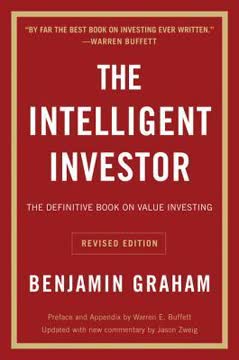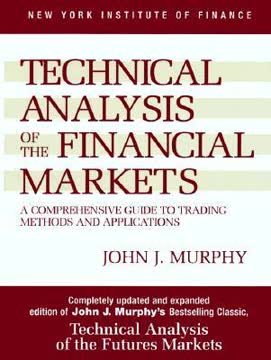मुख्य निष्कर्ष
1. सभी वित्तीय बाजार आपस में जुड़े हुए हैं, चाहे वे घरेलू हों या वैश्विक
कोई भी बाजार अकेले नहीं चलता
वैश्विक संबंध। चार मुख्य बाजार समूह - स्टॉक्स, बॉन्ड्स, कमोडिटीज़ और करेंसी - सभी एक-दूसरे से जुड़े हुए हैं। एक बाजार में बदलाव अक्सर अन्य बाजारों को प्रभावित करता है। उदाहरण के लिए:
- कमोडिटी की कीमतों में वृद्धि अक्सर ब्याज दरों में बढ़ोतरी और बॉन्ड की कीमतों में गिरावट लाती है
- डॉलर के गिरने से आमतौर पर कमोडिटी की कीमतें और उभरते बाजारों की रिटर्न बढ़ती है
- वैश्विक स्टॉक मार्केट्स खासकर बड़े गिरावट के समय एक साथ चलते हैं
यह जुड़ाव सीमाओं से परे है। किसी एक देश या क्षेत्र की घटनाएं जल्दी से वैश्विक बाजारों में फैल जाती हैं। 1997 के एशियाई मुद्रा संकट ने उदाहरण स्वरूप विश्व के बाजारों को प्रभावित किया था।
2. कमोडिटी की कीमतें और बॉन्ड यील्ड्स आमतौर पर एक ही दिशा में चलते हैं
कमोडिटी की बढ़ती कीमतें आमतौर पर बॉन्ड की कीमतों को गिराती हैं और यील्ड्स को बढ़ाती हैं
मुद्रास्फीति की उम्मीदें। कमोडिटी की कीमतों को मुद्रास्फीति के दबाव का संकेत माना जाता है। जब कमोडिटी की कीमतें बढ़ती हैं, तो यह अक्सर बढ़ती मुद्रास्फीति का संकेत होता है, जो फिक्स्ड-इनकम निवेश जैसे बॉन्ड की कीमत को कम कर देता है। परिणामस्वरूप:
- जब कमोडिटी की कीमतें बढ़ती हैं, तो बॉन्ड यील्ड्स बढ़ते हैं (और बॉन्ड की कीमतें गिरती हैं)
- जब कमोडिटी की कीमतें गिरती हैं, तो बॉन्ड यील्ड्स गिरते हैं (और बॉन्ड की कीमतें बढ़ती हैं)
यह संबंध हमेशा तुरंत या पूर्णतः सटीक नहीं होता, लेकिन यह एक महत्वपूर्ण अंतर-बाजार सिद्धांत है जिसे ध्यान में रखना चाहिए। तांबे जैसे औद्योगिक कमोडिटीज़ को बॉन्ड और अर्थव्यवस्था के लिए अग्रणी संकेतक के रूप में देखना खासा महत्वपूर्ण है।
3. आर्थिक चक्र के प्रमुख मोड़ों पर बॉन्ड आमतौर पर स्टॉक्स से आगे रहते हैं
बॉन्ड स्टॉक्स से पहले चरम पर पहुंचते हैं और पहले नीचे आते हैं
आर्थिक पूर्वदृष्टि। बॉन्ड बाजार को स्टॉक बाजार की तुलना में आर्थिक परिस्थितियों के बारे में बेहतर पूर्वानुमान करने वाला माना जाता है। इसलिए:
- प्रमुख बाजार चरम पर बॉन्ड की कीमतें अक्सर स्टॉक्स से कई महीने पहले चरम पर पहुंचती हैं और यील्ड्स नीचे आते हैं
- प्रमुख बाजार निचले स्तर पर बॉन्ड की कीमतें अक्सर स्टॉक्स से कई महीने पहले नीचे आती हैं और यील्ड्स चरम पर होते हैं
इस कारण बॉन्ड बाजार स्टॉक बाजार और अर्थव्यवस्था के लिए एक महत्वपूर्ण अग्रणी संकेतक होता है। उदाहरण के लिए, 1987 में स्टॉक मार्केट क्रैश से कई महीने पहले बॉन्ड बाजार चरम पर था। इसी तरह, 2000 में टेक बुलबुला फूटने से पहले बॉन्ड ने निचला स्तर छुआ था।
4. व्यापार चक्र स्टॉक मार्केट के भीतर सेक्टर रोटेशन को संचालित करता है
व्यापार चक्र के विभिन्न चरणों में अलग-अलग बाजार सेक्टर बेहतर प्रदर्शन करते हैं
चक्रीय बदलाव। जैसे-जैसे अर्थव्यवस्था विस्तार और संकुचन के दौर से गुजरती है, विभिन्न स्टॉक मार्केट सेक्टर बेहतर प्रदर्शन करते हैं:
- प्रारंभिक विस्तार: उपभोक्ता चक्रीय, प्रौद्योगिकी, परिवहन
- मध्य विस्तार: पूंजीगत वस्तुएं, मूलभूत सामग्री
- अंतिम विस्तार: ऊर्जा, सामग्री, औद्योगिक
- प्रारंभिक संकुचन: उपभोक्ता आवश्यक वस्तुएं, स्वास्थ्य सेवा, उपयोगिताएँ
- अंतिम संकुचन: वित्तीय, उपभोक्ता चक्रीय
व्यापार चक्र में हमारी स्थिति को समझना यह पहचानने में मदद करता है कि कौन से सेक्टर बेहतर प्रदर्शन कर सकते हैं। सेक्टरों का सापेक्ष ताकत विश्लेषण भी आर्थिक चक्र की स्थिति के बारे में संकेत दे सकता है।
5. रियल एस्टेट और आवास ब्याज दरों के प्रति संवेदनशील, विपरीत चक्रीय संपत्तियाँ हैं
आवास और रियल एस्टेट ब्याज दरों की दिशा से गहराई से जुड़े होते हैं
कम दरों के लाभार्थी। जब ब्याज दरें गिरती हैं, जो अक्सर आर्थिक मंदी के दौरान होता है, तब रियल एस्टेट अच्छा प्रदर्शन करता है। मुख्य बिंदु:
- कम मॉर्गेज दरें आवास की किफायती और मांग बढ़ाती हैं
- REITs (रियल एस्टेट इन्वेस्टमेंट ट्रस्ट) कम उधार लागत से लाभान्वित होते हैं और दरें गिरने पर बेहतर प्रदर्शन करते हैं
- जब स्टॉक्स कमजोर होते हैं, तब आवास पोर्टफोलियो विविधीकरण प्रदान कर सकता है
हालांकि, यह संबंध हमेशा स्थिर नहीं रहता। उच्च मुद्रास्फीति या मुद्रास्फीति की कमी के दौर में रियल एस्टेट पर अलग प्रभाव पड़ सकता है। यह सेक्टर लगभग 18 वर्षों के अपने दीर्घकालिक चक्र का भी पालन करता है।
6. मुद्रास्फीति की कमी (डिफ्लेशन) पारंपरिक अंतर-बाजार संबंधों को बदल देती है
डिफ्लेशन के दौरान, बॉन्ड की कीमतें बढ़ती हैं जबकि स्टॉक्स गिरते हैं
परिपाटी में बदलाव। डिफ्लेशन के माहौल में कुछ मुख्य अंतर-बाजार संबंध बदल जाते हैं:
- बॉन्ड और स्टॉक्स अलग हो जाते हैं, बॉन्ड बढ़ते हैं जबकि स्टॉक्स गिरते हैं
- कमोडिटी की गिरती कीमतें स्टॉक्स के लिए बुलिश की बजाय बेयरिश होती हैं
- नकद और उच्च गुणवत्ता वाले बॉन्ड पसंदीदा संपत्तियाँ बन जाती हैं
यह 1930 के महामंदी के दौरान और कुछ हद तक 2000 के दशक की शुरुआत में डिफ्लेशन के दबावों के दौरान देखा गया था। डिफ्लेशन की स्थिति को पहचानना उचित संपत्ति आवंटन के लिए अत्यंत आवश्यक है।
7. अनुपात विश्लेषण संपत्ति वर्गों के बीच सापेक्ष ताकत पहचानने में मदद करता है
बढ़ता अनुपात रेखा दर्शाता है कि अंशदाता बाजार मजबूत है
तुलनात्मक प्रदर्शन। अनुपात चार्ट एक संपत्ति को दूसरी से विभाजित करके सापेक्ष ताकत दिखाते हैं:
- बढ़ता CRB/स्टॉक अनुपात = कमोडिटीज़ स्टॉक्स से बेहतर प्रदर्शन कर रही हैं
- बढ़ता बॉन्ड/स्टॉक अनुपात = बॉन्ड स्टॉक्स से बेहतर प्रदर्शन कर रहे हैं
- बढ़ता गोल्ड/करेंसी अनुपात = सोना उस मुद्रा की तुलना में बेहतर प्रदर्शन कर रहा है
ये अनुपात संपत्ति वर्गों के बीच प्रमुख प्रवृत्ति परिवर्तनों की पहचान कर सकते हैं और संपत्ति आवंटन निर्णयों में मार्गदर्शन कर सकते हैं। उदाहरण के लिए, 2000 में CRB/स्टॉक अनुपात का निचला स्तर कागजी संपत्तियों से हार्ड संपत्तियों की ओर बड़े बदलाव का संकेत था।
8. दीर्घकालिक आर्थिक चक्र वित्तीय बाजार की प्रवृत्तियों को प्रभावित करते हैं
प्रत्येक संपत्ति वर्ग का अपना "सूरज के नीचे दिन" होता है
दीर्घकालिक बदलाव। कई दीर्घकालिक चक्र बाजार व्यवहार को प्रभावित करते हैं:
- कोंड्राटिएव वेव: लगभग 55 वर्ष का आर्थिक गतिविधि और मुद्रास्फीति चक्र
- 18-वर्षीय रियल एस्टेट चक्र
- 4-वर्षीय व्यापार चक्र
ये चक्र विभिन्न संपत्ति वर्गों में बहु-वर्षीय प्रवृत्तियों को समझाने में मदद करते हैं। उदाहरण के लिए, कोंड्राटिएव के शीतकालीन चरण में कमोडिटी की कीमतें गिरती हैं और डिफ्लेशन होता है, जैसा कि 1930 और 2000 के दशक की शुरुआत में देखा गया।
इन दीर्घकालिक चक्रों की स्थिति को समझना अल्पकालिक प्रवृत्तियों और संपत्ति आवंटन निर्णयों के लिए मूल्यवान संदर्भ प्रदान करता है।
9. प्रमुख मंदी के दौरान वैश्विक विविधीकरण के लाभ कम हो जाते हैं
ऐसे समय में विश्व के बाजार आमतौर पर एक साथ गिरते हैं
सहसंबंध का संकुचन। जबकि वैश्विक विविधीकरण आमतौर पर लाभकारी होता है, गंभीर बाजार गिरावट के दौरान इसके फायदे काफी कम हो सकते हैं:
- 1987 के क्रैश, 1998 के एशियाई संकट, और 2000-2002 के मंदी के दौरान वैश्विक स्टॉक्स एक साथ गिरे
- उभरते बाजार अक्सर विकसित बाजारों की तुलना में और भी तेज गिरावट का सामना करते हैं
- मुद्रा उतार-चढ़ाव विदेशी निवेशों के नुकसान को बढ़ा सकते हैं
यह दीर्घकालिक वैश्विक विविधीकरण के लाभों को नकारता नहीं है, लेकिन निवेशकों को यह समझना चाहिए कि चरम बाजार स्थितियों में यह उतनी सुरक्षा नहीं दे सकता।
10. मुद्रा प्रवृत्तियाँ कमोडिटी की कीमतों और वैश्विक रिटर्न को महत्वपूर्ण रूप से प्रभावित करती हैं
गिरता हुआ डॉलर कमोडिटीज़ के लिए बुलिश होता है
विनिमय दर का प्रभाव। मुद्रा की चाल का व्यापक प्रभाव होता है:
- गिरता हुआ डॉलर आमतौर पर कमोडिटी की कीमतों को बढ़ाता है (जो डॉलर में मूल्यांकित होती हैं)
- कमजोर मुद्राएँ निर्यात-आधारित अर्थव्यवस्थाओं को लाभ पहुंचाती हैं
- मुद्रा प्रवृत्तियाँ विदेशी निवेशों की सापेक्ष आकर्षकता को प्रभावित करती हैं
उदाहरण के लिए, 2002-2003 में डॉलर के गिरने से कमोडिटी की कीमतें बढ़ीं और उभरते बाजारों ने अच्छा प्रदर्शन किया। मुद्रा प्रवृत्तियों को समझना वैश्विक निवेशकों और कमोडिटी ट्रेडर्स के लिए अत्यंत आवश्यक है।
अंतिम अपडेट:
FAQ
What's Intermarket Analysis: Profiting from Global Market Relationships about?
- Market Relationships: The book delves into the interconnectedness of financial markets, including stocks, bonds, commodities, and currencies, and how they influence each other.
- Intermarket Analysis Tool: John J. Murphy presents intermarket analysis as a branch of technical analysis, useful for predicting market trends and making informed trading decisions.
- Historical Context: It reviews significant market events from the 1980s to the early 2000s, illustrating the evolution of intermarket relationships during economic changes.
Why should I read Intermarket Analysis by John J. Murphy?
- Comprehensive Understanding: The book enhances your understanding of global market interactions, crucial for informed investment decisions.
- Practical Applications: It offers practical advice on applying intermarket analysis in real-world trading, valuable for both novice and experienced traders.
- Historical Insights: Murphy's analysis of past market events provides context and lessons to anticipate future market movements.
What are the key takeaways of Intermarket Analysis?
- Market Interconnections: All markets are linked, both domestically and globally, meaning changes in one can significantly impact others.
- Deflation vs. Inflation: The book discusses how deflationary trends can alter traditional market relationships, such as rising bond prices being bad for stocks.
- Sector Rotation: Understanding sector rotation is crucial, as different sectors perform better at various stages of the economic cycle.
What are the best quotes from Intermarket Analysis and what do they mean?
- "All markets are linked": Emphasizes the importance of considering multiple markets for accurate financial trend analysis.
- "Rising bond prices are actually bad for stocks": Highlights a critical shift in market dynamics during deflationary periods.
- "Charts don’t lie": Underscores the importance of technical analysis and charting in understanding market trends.
What is intermarket analysis as defined in Intermarket Analysis?
- Definition: Intermarket analysis studies relationships between different financial markets to forecast price movements.
- Key Components: Focuses on stocks, bonds, commodities, and currencies, providing insights into economic conditions and investment opportunities.
- Dynamic Nature: Relationships are not static and can change due to economic shifts, requiring traders to stay informed.
How does Intermarket Analysis explain the relationship between commodities and bonds?
- Inverse Relationship: Bond prices and commodities trend in opposite directions; when commodity prices rise, bond prices typically fall.
- Impact of Inflation: Rising commodity prices often signal inflation, leading to higher interest rates and lower bond prices.
- Historical Context: Provides historical examples to illustrate these relationships during significant economic events.
What role does the dollar play in intermarket analysis according to John J. Murphy?
- Dollar's Influence: A falling dollar is bullish for commodities, affecting their prices and U.S. export demand.
- Global Impact: Changes in the dollar's value influence global markets, affecting commodity prices and stock valuations.
- Investment Strategies: Understanding dollar movements aids in better asset allocation, especially in commodities and multinational stocks.
How does Intermarket Analysis address the concept of deflation?
- Deflationary Trends: Deflation alters traditional market relationships, being good for bonds but bad for commodities and potentially stocks.
- Historical Examples: Provides context on how deflationary pressures impacted markets in the past.
- Investment Implications: Guides investment strategies, particularly in choosing between asset classes during economic downturns.
What is the significance of sector rotation in Intermarket Analysis?
- Sector Performance: Different sectors perform better at various economic cycle stages, guiding investment strategies.
- Investment Strategy: Recognizing outperforming sectors helps in resource allocation during economic transitions.
- Historical Context: Provides examples of sector rotation during past economic cycles, emphasizing its importance.
How can I apply the concepts from Intermarket Analysis to my trading strategy?
- Comprehensive Market Analysis: Evaluate multiple markets simultaneously to enhance trading decisions.
- Monitor Economic Indicators: Key indicators like interest rates and commodity prices provide insights into market trends.
- Adapt to Market Conditions: Be flexible, adjusting focus based on current market conditions and sector performance.
How do commodities influence the stock market according to Intermarket Analysis?
- Inflation Hedge: Commodities serve as an inflation hedge, with rising prices indicating strengthening economic conditions.
- Sector Performance: Rising commodity prices boost sectors like energy and materials, lifting the overall stock market.
- Market Sentiment: Changes in commodity prices affect market sentiment and investor behavior, influencing stock prices.
What is the significance of the yield curve in Intermarket Analysis?
- Economic Indicator: The yield curve reflects economic health, with a normal curve indicating growth and an inverted curve signaling recession.
- Investment Decisions: Understanding the yield curve aids in bond investment decisions and anticipating stock market changes.
- Market Reactions: Shifts in the yield curve impact various asset classes, highlighting market interconnectedness.
समीक्षाएं
इंटरमार्केट विश्लेषण को मिली-जुली प्रतिक्रियाएँ मिली हैं, जिसकी औसत रेटिंग 4.17/5 है। पाठक मर्फी की स्पष्ट लेखन शैली और बाजार संबंधों पर उनकी गहरी समझ की सराहना करते हैं, खासकर मंदी के दौर में। यह पुस्तक जटिल आर्थिक अवधारणाओं को सरल भाषा में समझाने के लिए प्रशंसित है और बाजार की अंतःक्रियाओं को समझने में अत्यंत उपयोगी मानी जाती है। हालांकि, कुछ आलोचक इसे ऐतिहासिक आंकड़ों पर अधिक निर्भरता और मुद्राओं के सीमित कवरेज के लिए आलोचना करते हैं। कुछ लोग इसे पुराना मानते हैं, फिर भी कई इसे बाजार की व्यापक गतिशीलता और सेक्टर रोटेशन को समझने के लिए बेहद लाभकारी पाते हैं।
Similar Books

















